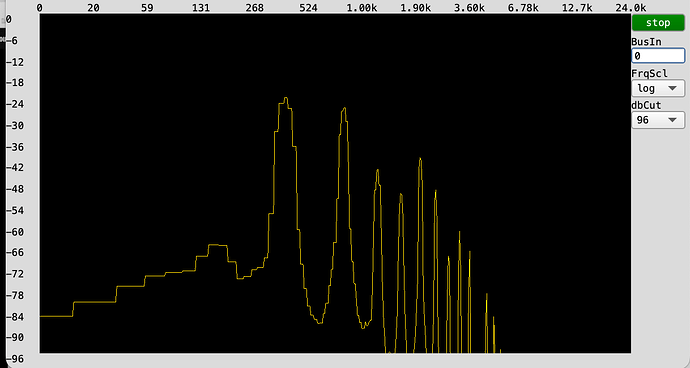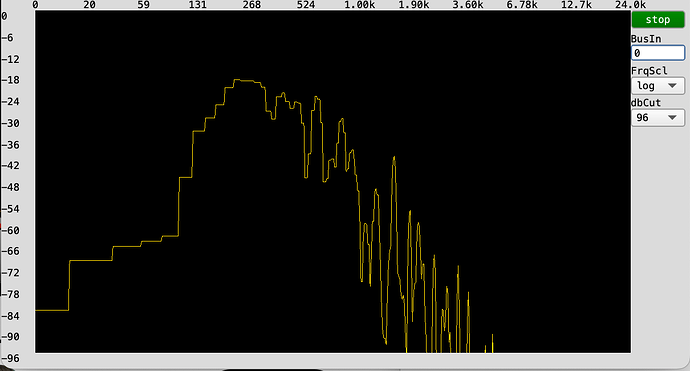I am trying to find a way to determine (or maybe more realistically, estimate) wether a buffer holds mono- or polyphonic material. I am not trying to extract the fundamentals, I just need to be able to determine if the buffer holds a single note (monophonic) or several notes (polyphonic). I have had a look at some of the Fluid Ugens, like FluidBufChroma but I am not sure how to use the information produced by the analysis to solve this.
I need this to work for electric guitar signals which are very harmonic, with only a little bit of in-harmonic information at the attack phase of the signal. Here I am stacking sinewaves to emulate the sound of the guitar although in reality the amplitudes decay differently from this abstraction. ]
How could I go about this?
// Create two buffers for testing - a is monophonic - b is polyphonic
(
a = Buffer.alloc(s, 0.5 * s.sampleRate);
b = Buffer.alloc(s, 0.5 * s.sampleRate);
{
var chord = [57, 61, 64]; // A major
var env = Env.perc(0.2, 0.3).ar;
var tone = {|midinote| 8.collect{|i| SinOsc.ar(midinote.midicps * (i + 1), 0, 0.1 * 1/(i+1)) }.sum };
RecordBuf.ar([chord[0]].collect(tone.(_)).sum * env, a, loop: 0, doneAction: 2);
RecordBuf.ar(chord.collect(tone.(_)).sum * env, b);
0
}.play
)
// inspect
a.play // the note A
b.play // the chord A major
{ [PlayBuf.ar(1, a), PlayBuf.ar(1, b) ] }.plot(0.5)
// how to determine which one is polyphonic and which is monophonic?




